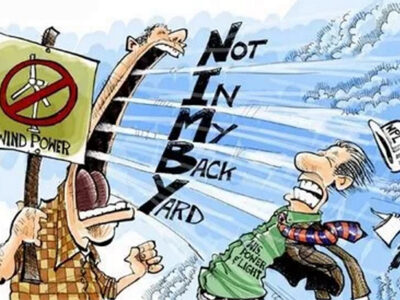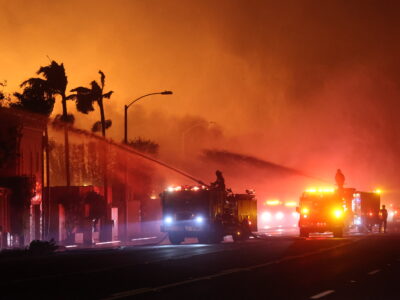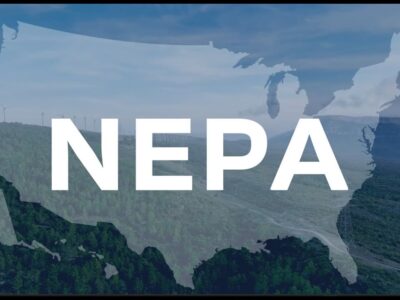Land Use
Another CEQA urban residential exemption bill
AB 609 provides a different and promising approach for advancing urban infill, but it could use a map
Following up on my recent post about SB 607, which proposes creating a California Environmental Quality Act (CEQA) exemption for urban infill housing, a similar bill, AB 609, has also been introduced this session. Like SB 607, AB 609 exempts from CEQA housing projects in urban areas. The main difference with respect to the infill …
Continue reading “Another CEQA urban residential exemption bill”
CONTINUE READINGThe NIMBY Presidency
Peter Navarro hates foreign trade. He also hates housing.
Well what a surprise. Not: Before Peter Navarro designed trade wars for President Trump, he orchestrated housing wars in San Diego across five unsuccessful bids for local office. Navarro, then a UC Irvine economics professor, led San Diego’s slow-growth movement in the 1990s, drawing battle lines that still define today’s development fights. His zero-sum view on homebuilding then …
Continue reading “The NIMBY Presidency”
CONTINUE READINGThe Death of CEQA?
Not quite, but Assemblymember Wicks’ new bill would severely limit CEQA for housing.
“Legislative bombthrower” is one of those cliched – and thus overused – metaphors. And California State Assemblymember Buffy Wicks (D-Richmond) has no reputation as one. But with her latest effort, AB 609, it seems like she is enjoying her Molotov cocktail shaken, not stirred. Wicks’ bill – now cosponsored with several other Assemblymembers – is …
Continue reading “The Death of CEQA?”
CONTINUE READINGCEQA and infill development
SB 607 is an excellent beginning for reforming CEQA to facilitate residential infill development
The state legislature continues its efforts to facilitate more housing production in California. Among the most significant bills being considered this session in Sacramento is SB 607, which would provide some substantial changes to how environmental review under the California Environmental Quality Act (CEQA) would operate. Overall, this is a bill that would provide important …
Continue reading “CEQA and infill development”
CONTINUE READINGLeft-Wing NIMBYism Strikes Out – Again
The Current Overheated Housing Market in Los Angeles Demonstrates That Market-Rate Housing Can Reduce Rents
One of the most pernicious aspects of the land use and housing debate over the last few years has been the rise of what we mean might call “left-wing NIMBYs.” It is essentially traditional NIMBYism but on allegedly progressive grounds. The principal argument of this group is that building more market-rate units will do nothing …
Continue reading “Left-Wing NIMBYism Strikes Out – Again”
CONTINUE READINGBanking and Exchange Programs to Mitigate Vehicle Miles Traveled
The 1950s has been called the decade of the American Dream. The United States economy grew by 37 percent, and homeownership surged as suburban houses—equipped with their white picket fences—“sold like hotcakes.” But this American Dream has come at a steep cost. Let’s fast forward to today; more than half a century of government housing …
Continue reading “Banking and Exchange Programs to Mitigate Vehicle Miles Traveled”
CONTINUE READINGDid California Policies Make the LA Fires Worse?
California’s environmental and climate regulations did not make the climate-fueled Palisades and Eaton fires more destructive or harder to fight. Here’s why.
We know climate change is partly to blame. Are California’s environmental policies regarding land and water management also to blame for the supercharged firestorm that has ravaged Los Angeles? It’s not just conspiracy theories on social media or misguided news stories; that’s the position of some congressional Republicans and President-elect Trump, who hold power over future …
Continue reading “Did California Policies Make the LA Fires Worse?”
CONTINUE READINGHonoring Michael Zischke (1954-2025)
A Force in the CEQA World
Michael Zischke was a talented and award-winning land use and environmental lawyer, Mike was widely recognized for his extensive expertise in California Environmental Quality Act (CEQA) litigation and compliance.
CONTINUE READINGCPUC Should Set a Date for Closing Aliso Canyon
A proposed decision on the gas facility gives too much deference to SoCalGas regarding the future of gas demand and misses an opportunity to set a clear mandate.
The Aliso Canyon gas storage facility blowout in 2015-16 was the largest methane gas leak in the history of the United States. In addition to the climate effects from the methane leakage — 109,000 metric tons, the equivalent of burning over 1 billion gallons of gasoline — there were tremendous health impacts on neighboring communities …
Continue reading “CPUC Should Set a Date for Closing Aliso Canyon”
CONTINUE READINGNEPA in the Supreme Court (Part II)
Here’s why the Supreme Court should reject radical arguments for limiting environmental impact statements.
Our last post explained the background of the Seven Counties NEPA case, which is currently pending in the Supreme Court. Today, we discuss the radical arguments that have been made in the case and why they should be rejected. NEPA requires that agencies consider the environmental effects of their projects, but the petitioners raise hairsplitting arguments to exclude obvious effects due to technicalities. Pleas for revising the law should be made to Congress, not to the Supreme Court.
CONTINUE READING









